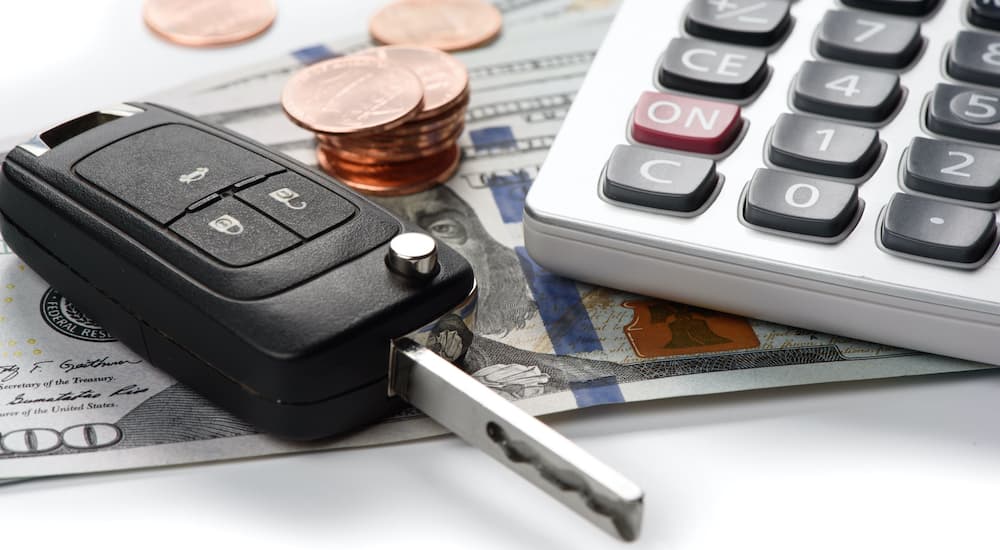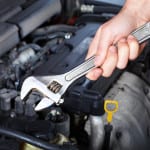The feeling of freedom you get from owning a vehicle is like nothing else you’ve experienced before. You’re able to come and go as you please and travel anywhere you so desire, which makes it a no-brainer for people to choose buying or leasing a car over depending on public transportation. Whether you’re shopping at a traditional dealership or you’re interested in the convenience of an online car dealership, keep a few things in mind about your purchase. The most important thing to remember is that owning a vehicle is a big responsibility that requires a hefty financial investment—in terms of both purchase/lease costs and ongoing maintenance costs.
What is the greatest cost of owning a car, you ask? We’ve compiled the top expenses of vehicle ownership.
Expense #1: Car Payments
Whether you decide to buy or lease your vehicle, you’re going to need to prepare for a monthly car payment, which will vary based on the make and model of the vehicle, year, trim package, and more. So, what is the average car payment that you can expect? According to Experian, the average monthly car payment for a new vehicle in 2021 was $644, while a leased vehicle sat around $531. Both have increased between 11-15% from the previous year.
Used vehicles definitely offer a better value, as you’re able to choose from a more diverse selection with features that most drivers wouldn’t be able to afford if buying new. Typical monthly payments for a used car are approximately $488—increasing by about 18.2% since 2020.
Although this is just a generalization of average monthly costs, you’ll still need to keep this in mind, carefully considering your budget to discern what you can afford. Choosing to buy instead of lease will allow you to enjoy years of no payments once your vehicle is paid off, which is the key benefit of this type of financial decision. Plus, vehicles like sedans and compact SUVs will typically offer more reasonable monthly payments, so doing your research is critical before selecting your next vehicle. I personally recommend car shopping online to easily compare prices.
Expense #2: Maintenance
Another big question is how much does it cost to maintain a car per year? Maintenance costs will again vary, depending on the car you drive—as well as your driving habits. According to AAA, it can cost upwards of 0.09 cents per mile to maintain a new vehicle. So, planning for these payments is another responsibility to consider.
Regular maintenance services should not be ignored, as these services extend the life of your vehicle, allow you to travel with confidence, and provide enhanced safety to your journey. Failure to keep up with maintenance can result in major repair needs—or worse, an accident.
You’ll want to make sure that you regularly schedule oil and filter changes, tire checks and rotations, wheel alignments, diagnostic checks, brake checks, and other inspections to ensure that your vehicle is running in tip-top shape. Again, the frequency and amount of money that you’ll need to set aside for this expense will depend heavily on the type of vehicle you drive, where you tend to travel, and how many miles you put on your vehicle each year.
Expense #3: Insurance, Registration & License Costs
Staying on top of the documentation for your car is a responsibility of any vehicle owner. Average car insurance costs will vary, based on where you live and the car you drive, but you can typically expect to pay approximately $140 per month for full coverage on your vehicle. Remember, when you lease a vehicle or when you’re still paying on the loan for your car, you’ll need to maintain full coverage as required by law in most states.
Another expense is the yearly registration cost. Perhaps this figure will vary the most, depending on where you live, so contacting your local DMV will provide you with the answers you’re seeking when it comes to vehicle registration fees.
Some states also require yearly inspections, which will warrant a trip to your local service center or garage. Not only will you need to be able to pay for the inspection, but if anything is needed to bring your car up to code, you’ll need to pay for these services also. You’ll also need to remain in good standing with your driver’s license, renewing it when needed for a fee. Failure to do so will result in a loss of your license or having to take part or all of your licensing exams again, depending on where you live.
Expense #4: Fuel Costs
Fuel costs are at an all-time high, and when you’re a vehicle owner, you’ll need to allot money to pay for this monthly or weekly expense, depending on how frequently you require a fill-up. What is the average fuel cost per month? In many parts of the country, gas prices have soared above $4 per gallon; while it may have cost you $40 to fill up your compact sedan per month in 2021, this has nearly doubled in price in 2022.
This is why hybrid vehicles are really having a shining moment. Able to cover more distance between fill-ups, hybrids utilize a gas engine combined with an electric motor to extend their range, offering superior fuel efficiency on the road.
Electric vehicles are also gaining in popularity. Keep in mind, however, that your EV will need to be charged, which will warrant a fee to do so. You can opt to install an at-home charging station for an additional price to reduce your dependence on charging at public stations. No matter which type of vehicle you drive, it takes money to power it, so ensuring that you’re budgeting your finances properly will allow you to afford to keep the wheels turning.
Expense #5: Repairs
You can never predict what’s going to happen during your drive. From regular wear and tear to debris on the road, circumstances may arise that warrant repairs. Having money set aside for these instances is highly advised. After all, as a responsible vehicle owner, it’s up to you to take care of any repairs so that your vehicle continues to run efficiently—as well as safely.
How much could you spend on car repairs a year? According to AAA, it’s best to set aside about $50 per month, which adds up to $600 per year for unexpected repairs.
Parts of your vehicle that suffer from wear and tear the most are the tires, brakes, lights, and battery—to name a few. We recommend having a trusted service center at the ready to help you with any repairs needed. Turning to the same service center for your repairs as you do for routine maintenance is the suggested operating procedure for vehicle owners, since the technicians will already be familiar with your car—and how to repair it.
Don’t ignore early signs of a problem. Not only could this result in more costly repairs, but you could also put yourself and others in danger.
The Costs of Owning a Car
From the comforts of home to the hobbies that you enjoy, you can expect to pay major costs for a fulfilling lifestyle—and your car is no exception. So remember: stay on top of your vehicle’s routine needs and set aside money for unexpected costs. Above all else, though, choose a vehicle that will maximize your ride and provide the level of safety and dependability that you’re looking for in your everyday journey.






